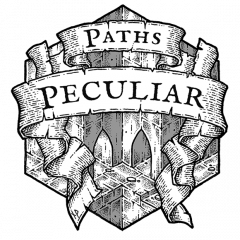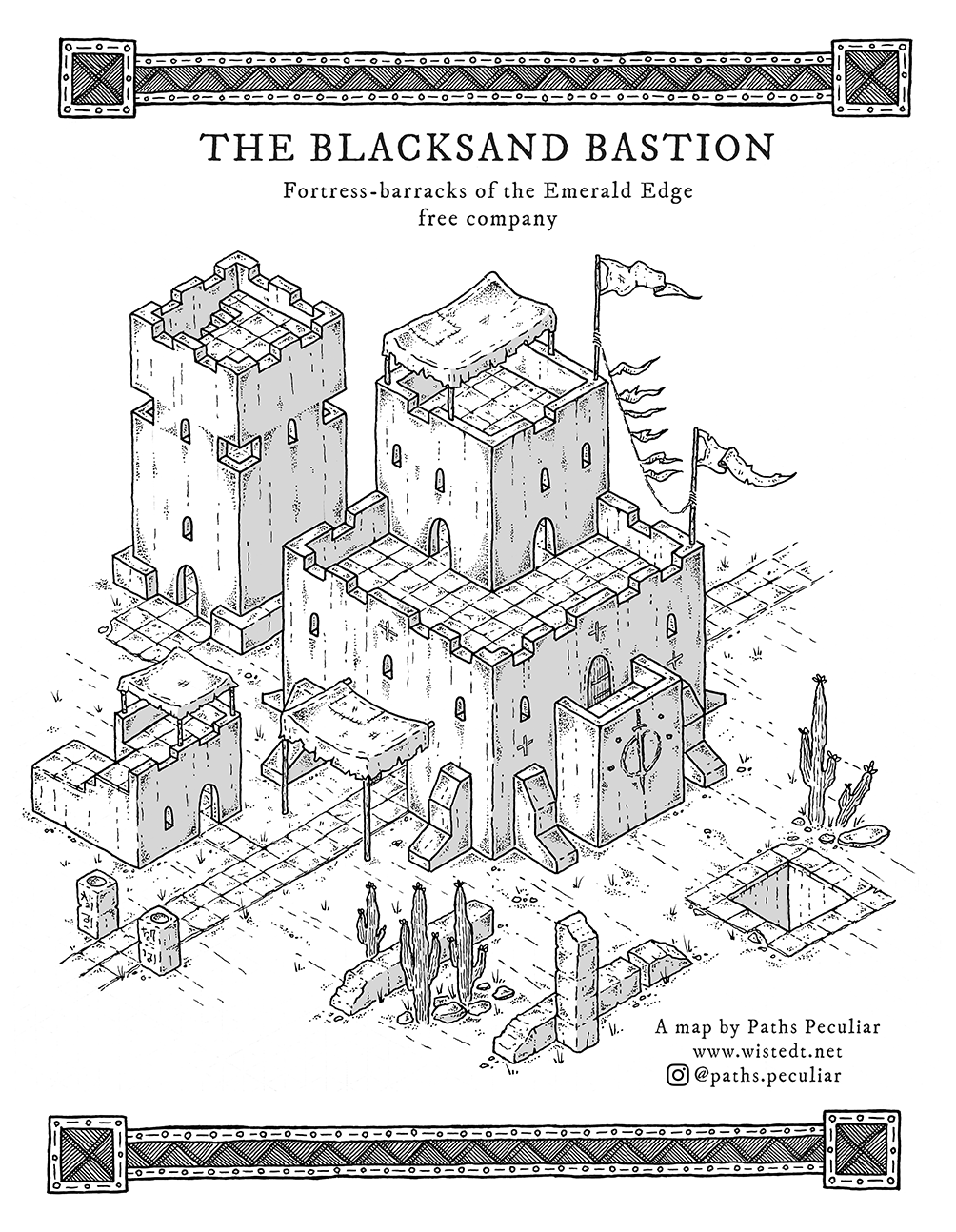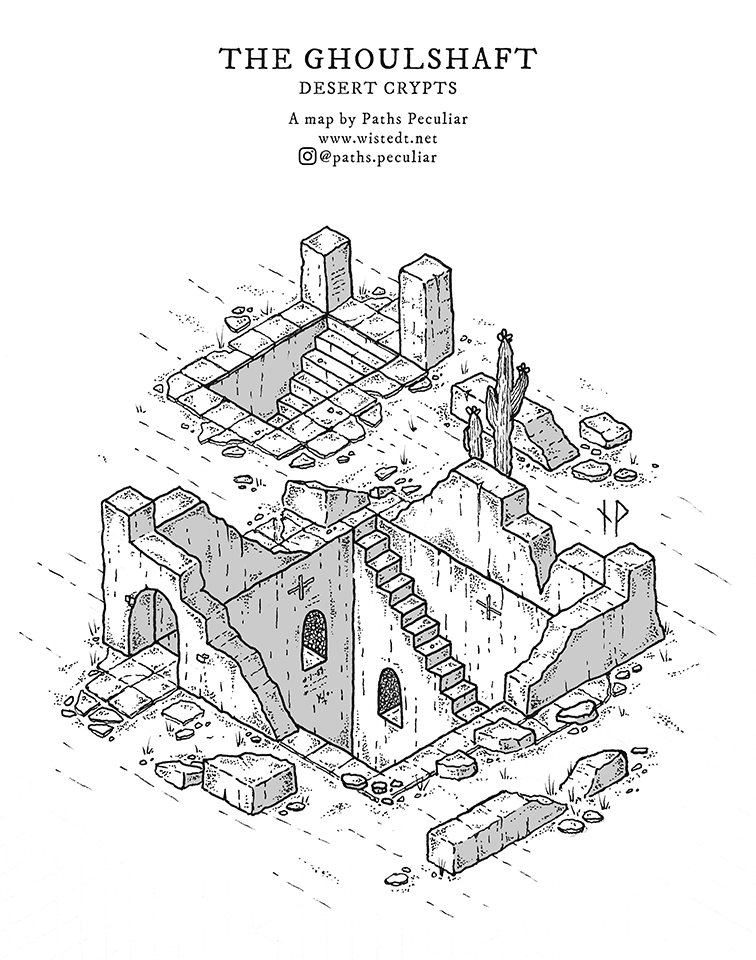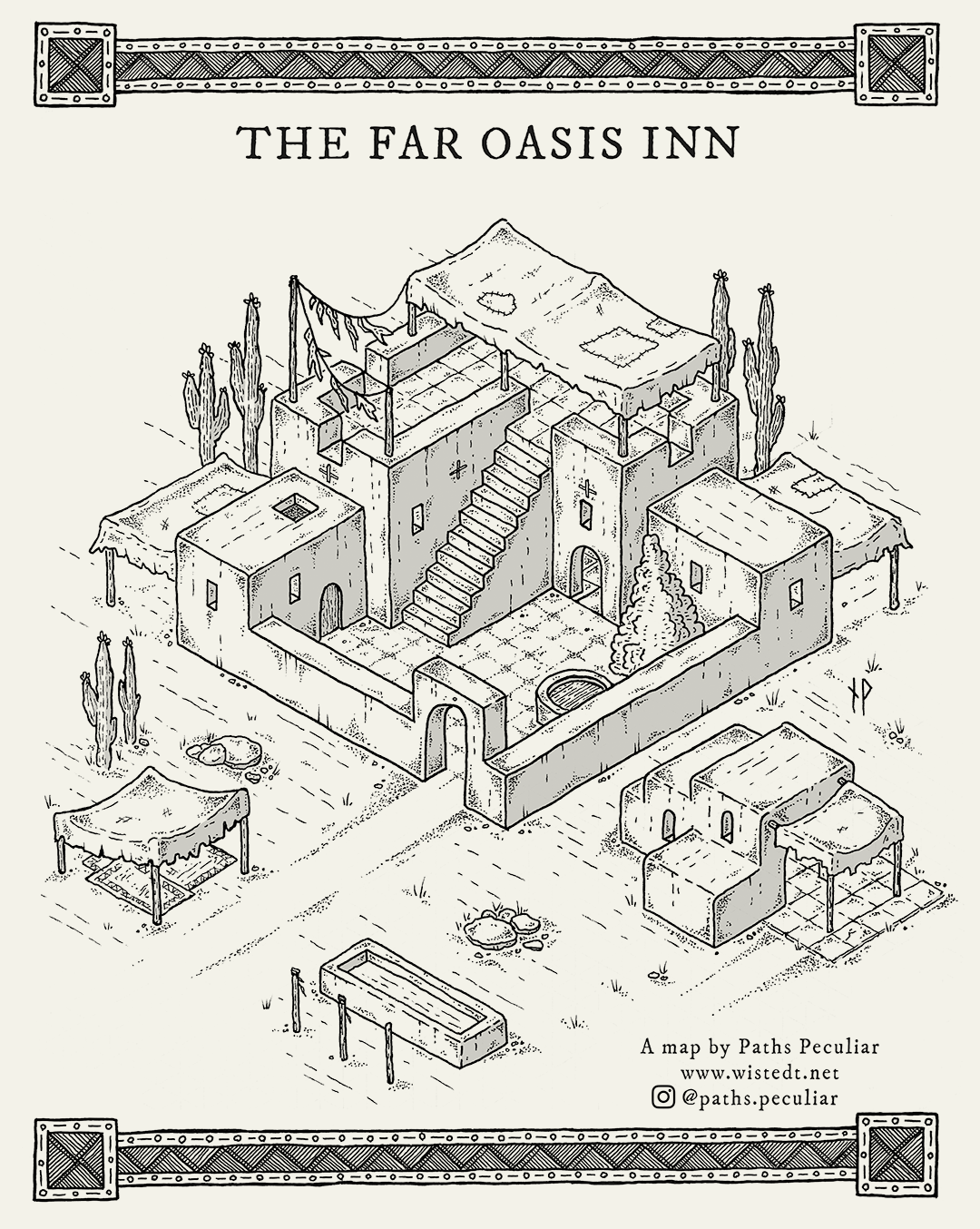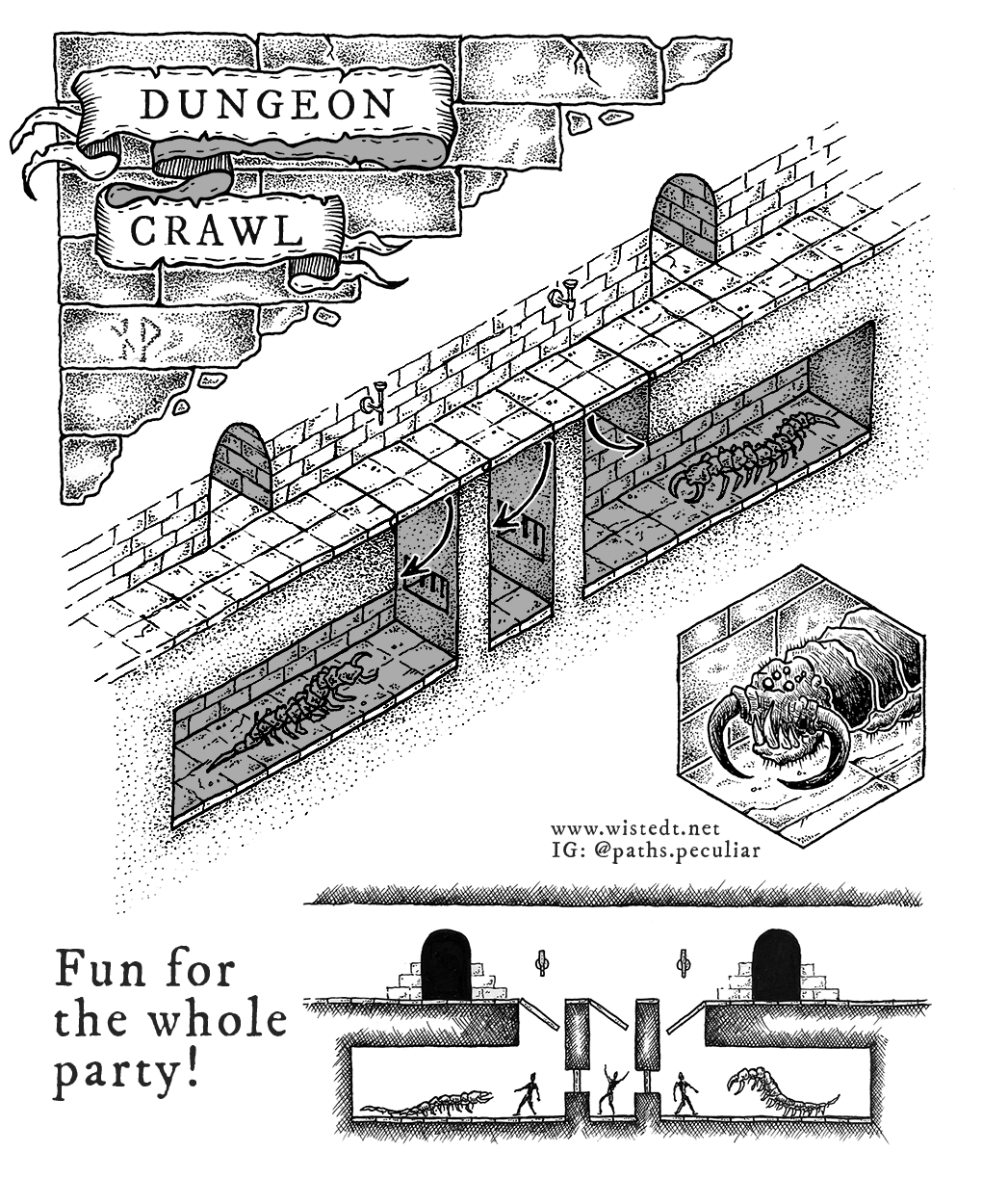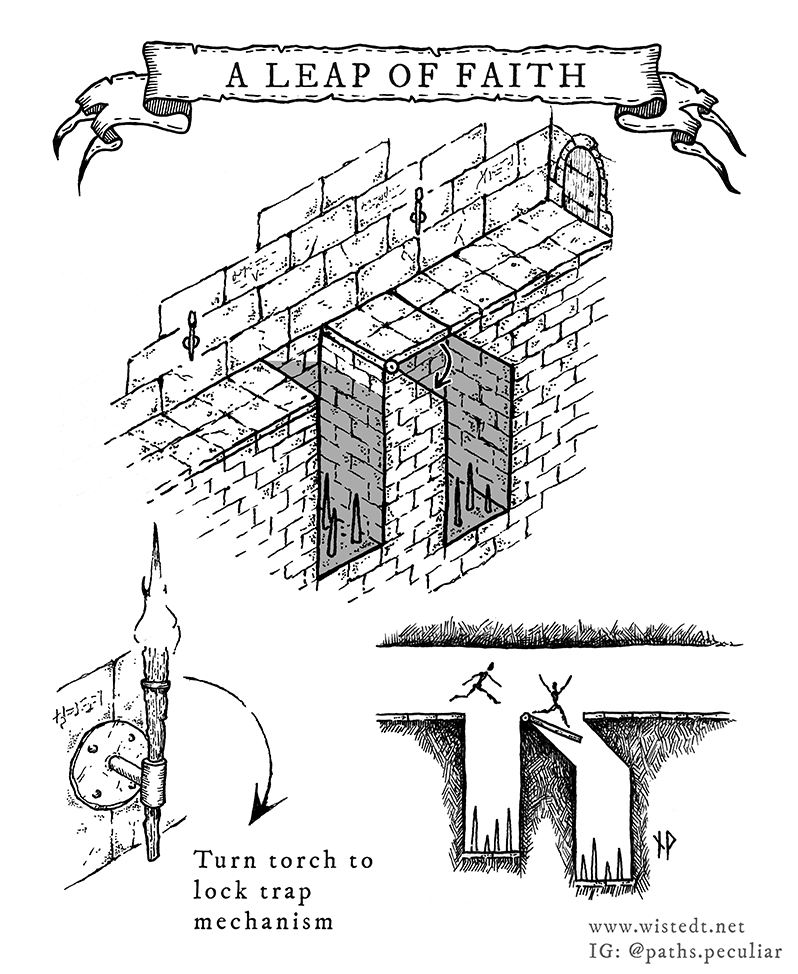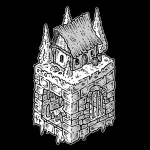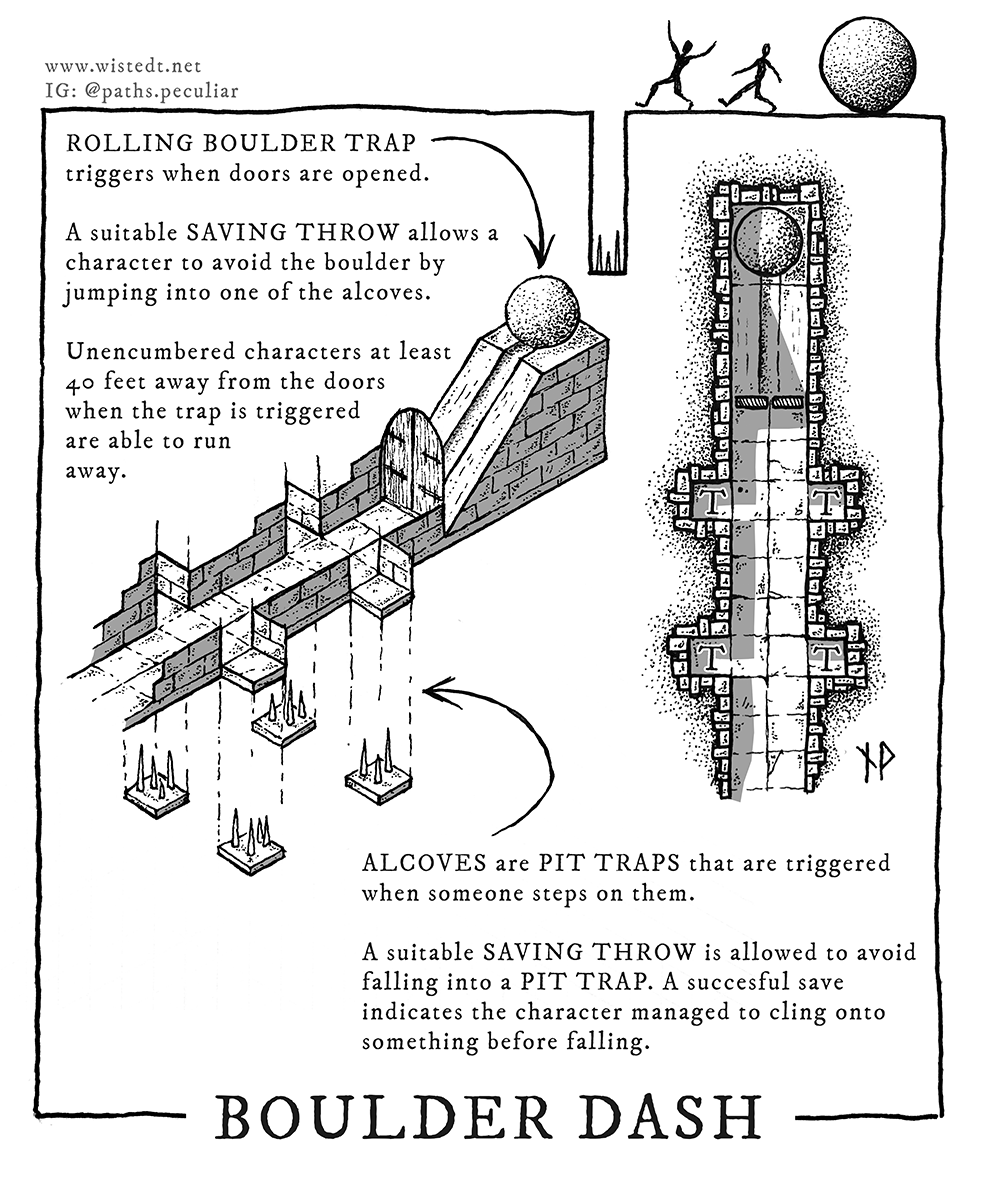Traps should be unfair, deadly and combined. The poor sods triggering the boulder trap (by opening the doors) will get a chance to dive into the alcoves for cover. Too bad for them the alcoves are really pit traps.
Depending on your playstyle, you can either let players roll suitable saving throws (such as reflex or vs. breath) to avoid the different traps, or you could go for the more grim approach of OSR games – “no saves, if you didn’t look for traps it’s on you”.
You could also reward clever, quick and creative thinking, spellcasting, etc.
Players who approach this situation carefully, examining the alcoves, should be able to find the pit traps, and perhaps realize something sinister awaits them on the other side of the door. I would probably not allow the mechanism of the rolling boulder trap to be found, but that’s really up to you as the dungeon master.
I didn’t have a specific reward in mind for surviving this situation, but if you want, there could of course be a hidden cache or an important inscription behind the boulder.
Option: you could also decide that the boulder is an illusion, and enjoy watching the player characters needlessly throw themselves into the pit traps 😀
Draw your own maps!
Would you like to draw your own maps? It’s a lot of fun! I’ve done several tutorials to help you get started. Check them out here!
